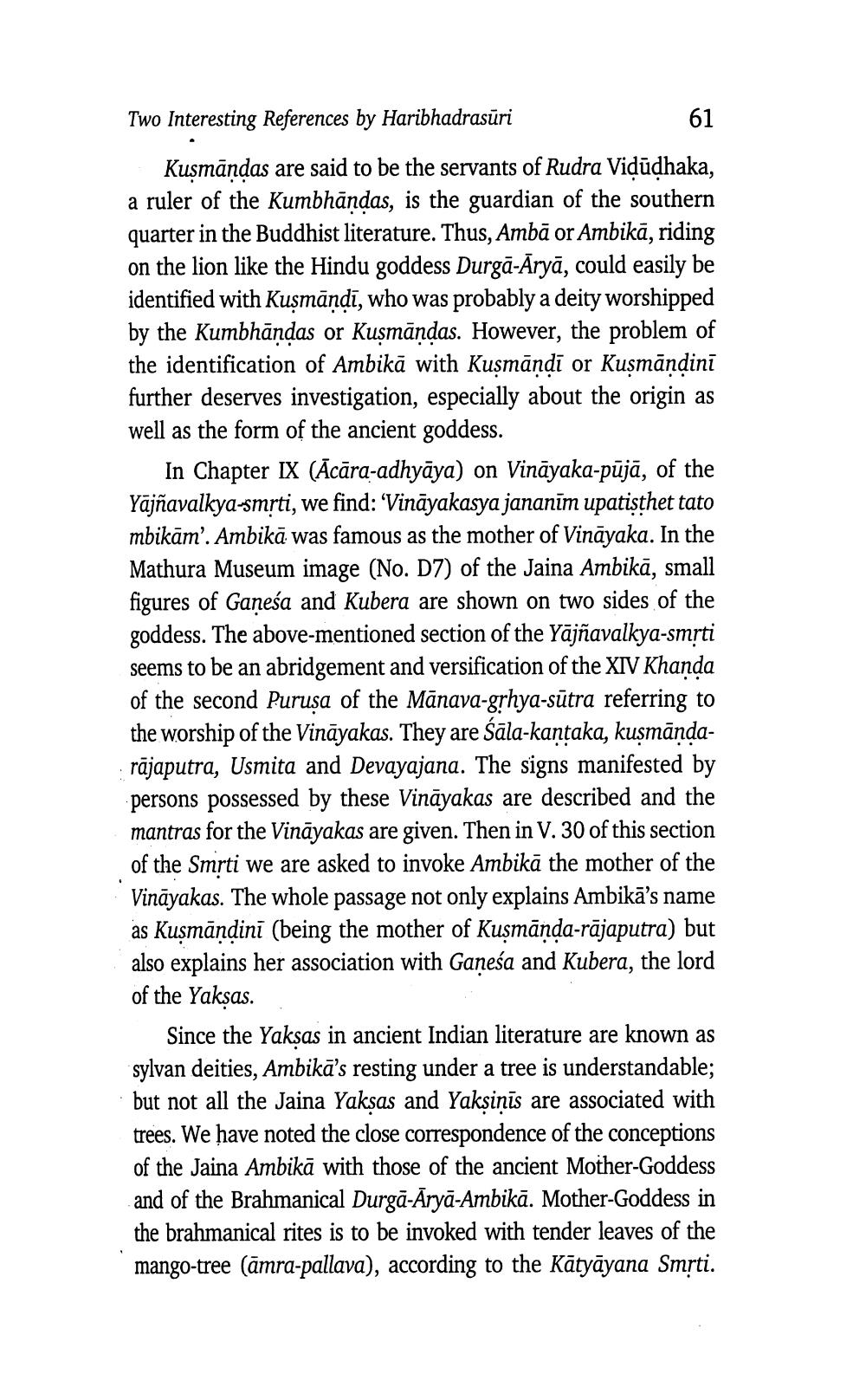________________
Two Interesting References by Haribhadrasūri
Kuşmāndas are said to be the servants of Rudra Vidūdhaka, a ruler of the Kumbhāndas, is the guardian of the southern quarter in the Buddhist literature. Thus, Ambā or Ambikā, riding on the lion like the Hindu goddess Durgā-āryā, could easily be identified with Kuşmāņdī, who was probably a deity worshipped by the Kumbhāndas or Kuşmāndas. However, the problem of the identification of Ambikā with Kuşmāņdī or Kuşmāņdini further deserves investigation, especially about the origin as well as the form of the ancient goddess.
In Chapter IX (Ācāra-adhyāya) on Vināyaka-pājā, of the Yajñavalkya-smrti, we find: ‘Vināyakasya jananīm upatisthet tato mbikām'. Ambikā was famous as the mother of Vināyaka. In the Mathura Museum image (No. D7) of the Jaina Ambikā, small figures of Ganeša and Kubera are shown on two sides of the goddess. The above-mentioned section of the Yājñavalkya-smrti seems to be an abridgement and versification of the XIV Khanda of the second Puruşa of the Mānava-gshya-sūtra referring to the worship of the Vināyakas. They are Sāla-kantaka, kuşmāndarājaputra, Usmita and Devayajana. The signs manifested by persons possessed by these Vināyakas are described and the mantras for the Vināyakas are given. Then in V. 30 of this section of the Smrti we are asked to invoke Ambikā the mother of the Vināyakas. The whole passage not only explains Ambikā's name as Kuşmāņdini (being the mother of Kuşmānda-rājaputra) but also explains her association with Gaņeśa and Kubera, the lord of the Yakşas.
Since the Yaksas in ancient Indian literature are known as sylvan deities, Ambikā's resting under a tree is understandable; but not all the Jaina Yakşas and Yakṣiṇīs are associated with trees. We have noted the close correspondence of the conceptions of the Jaina Ambikā with those of the ancient Mother-Goddess and of the Brahmanical Durgā-āryā-Ambikā. Mother-Goddess in the brahmanical rites is to be invoked with tender leaves of the mango-tree (āmra-pallava), according to the Kātyāyana Smrti.




